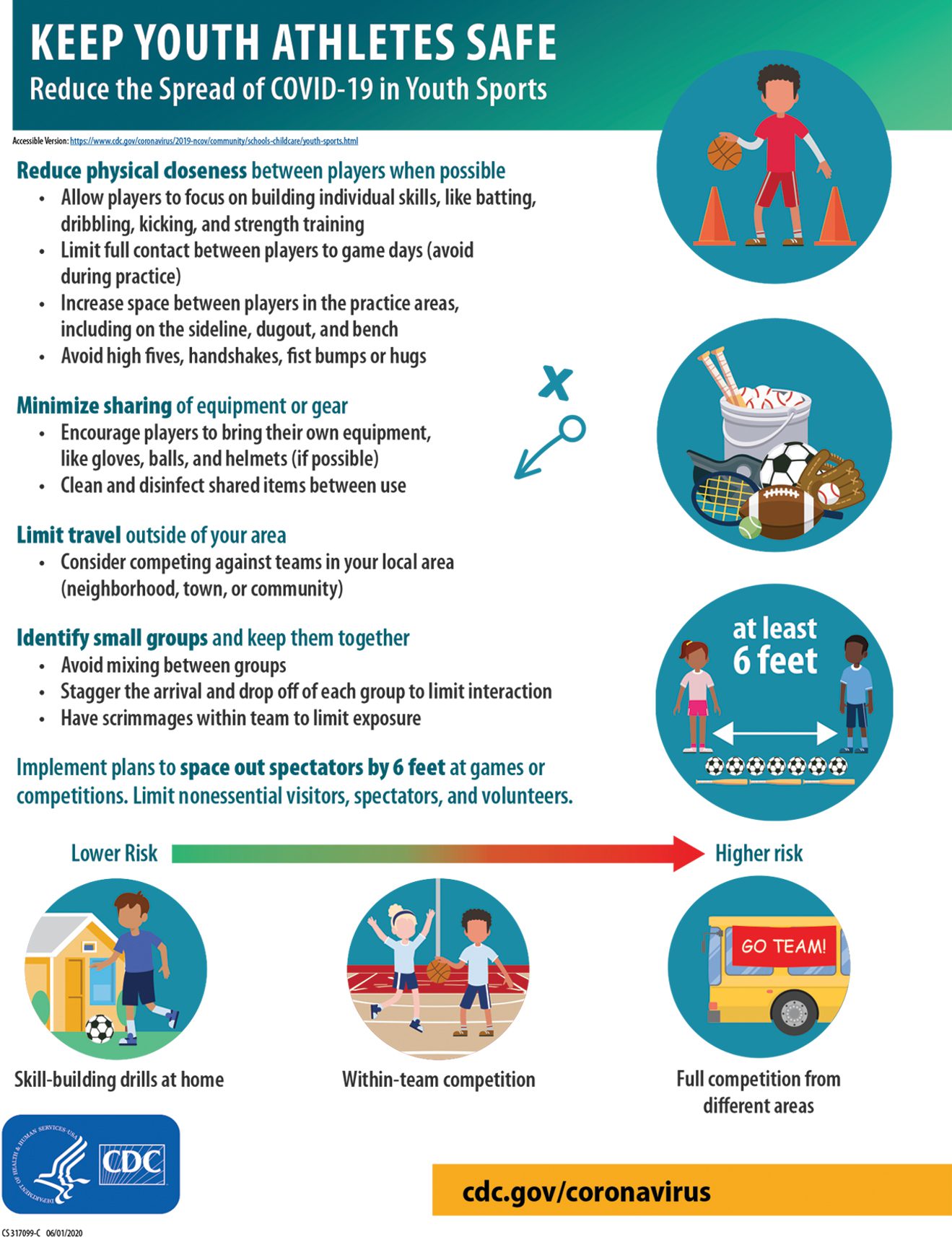By Heidi Smith, Contributor
While exercise is important for overall health, staying fit during a pandemic – especially returning to group sports – can place athletes at risk for contracting and spreading disease. David Taing, M.D., CAQSM, a Venice area family physician who specializes in sports medicine, says he’s concerned that many athletes, parents and coaches may not be fully aware of the risks and precautions.
“Participating in sports can be very good for mental and physical health. However, it is important to know the risks of COVID-19 infection related to sports so you can make decisions that are best for your family,” said Dr. Taing, who cares for patients at Gulf Coast Medical Group in Venice.
“The increase in cases of COVID-19 that we have seen since the summer raises concerns that athletes, coaches and parents need to take seriously,” he said. “Young people, in particular, can feel like they are invincible. Tragically, this can lead to their spreading the disease and bringing it home to loved ones and neighbors.”
Dr. Taing understands how athletes think and how teams operate. He has served as team physician for many high school sports teams, the Atlanta Falcons, WWE (World Wrestling Entertainment), universities and marathon events. He shared some do’s and don’ts from the Centers for Disease Control and Prevention (CDC) for engaging in group sports during the COVID-19 pandemic. Additional guidance is available at CDC.gov under “Playing Sports.”
First, it’s important to stay abreast of local and state rules, as well as CDC guidelines, about sports activities during the pandemic. Guidance or mandates may change depending on trends in virus transmission in your community.
Before a practice or game, stay home if you’re sick or have a fever, or if you’ve been close to someone who has COVID-19.
Wash hands and/or use hand sanitizer with at least 60% alcohol before arriving. Bring personal sports equipment and water bottle labeled with your name,
and your own towel and tissues. Stay in your vehicle or an area assigned by your coach until it’s time to practice.
During the practice or game, maintain 6 to 8 feet of physical distance as much as possible. Wear a cloth face covering as much as possible, especially on sidelines, in dugouts and during team chats.

Avoid close contact activities like huddles, high-fives and handshakes. Don’t share food or drink with teammates. Don’t spit and don’t blow your nose without using a tissue.
Store personal equipment separately (6 to 8 feet away from other teammates’ equipment).
Tell your coach if you’re not feeling well and leave the activity in the company of a parent or caregiver.
After the practice or game, sanitize or wash your hands. Wash your cloth face covering, towel and practice clothes or uniform. Clean personal sports equipment and water bottles. The CDC website (CDC.gov) offers guidance on proper cleaning and disinfecting techniques.
“Coaches should have checklists, too,” Dr. Taing said. “As role models, coaches should be diligent about following safety guidelines like wearing a cloth face covering and encouraging others to wear one during practices and games.”
Additional reminders for coaches include sending emails or calling to inform parents about precautions and reminding players to stay home if sick or if they have been around someone who is sick.
Provide hand sanitizer to players before and after the practice or game, and remind them to wash hands with soap and water for at least 20 seconds before and after the activity.
Educate players on the proper way to cover coughs and sneezes with a tissue or elbow, and remind players to maintain social distancing as much as possible. Using signage or tape on the floor can help.
Coaches also can advise and encourage players to focus on building their individual skills and cardiovascular conditioning at home, so they can limit close contact with other players. Many skill-building drills can be done individually at home.
“After many months of dealing with the COVID-19 outbreak, people are getting tired of being at home and they want to be out and about,” Dr. Taing said. “Believe me, I understand that feeling, but it’s important to practice safety guidelines to limit the spread of this potentially life-threatening disease.”
For more information about staying healthy while engaging in sports during the COVID-19 pandemic, read “Playing Sports” and “Considerations for Youth Sports” at CDC.gov.
Know the Risks
It is important to consider the risks of COVID-19 infection related to sports so you can make decisions that are best for your family. The CDC offers basic guidance for measuring risk level:
• Lowest Risk: Performing skill-building drills or conditioning at home, alone or with family members.
• Increasing Risk: Team-based practice.
• More Risk: Within-team competition.
• Even More Risk: Full competition between teams from the same local geographic area.
• Highest Risk: Full competition between teams from different geographic areas.
David Taing, M.D., CAQSM, is a family physician who specializes in sports medicine at Gulf Coast Medical Group in Venice.
Call 941-488-1906 or visit VeniceRegional.com
 Southwest Florida's Health and Wellness Magazine Health and Wellness Articles
Southwest Florida's Health and Wellness Magazine Health and Wellness Articles

